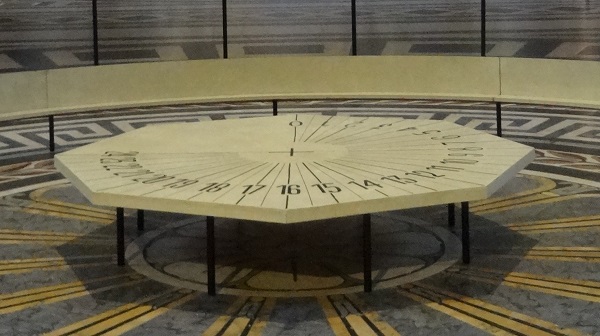
Step aside romantics, fashionistas, culinary travelers, art-lovers, luxury hounds, honeymooners—Paris is for nerds.
Science doesn’t occupy a world apart in Paris but is integral part of some of the city’s most visited sights. So even if math and science were never your strong points Paris is capable of stimulating your inner geek.
From Eiffel’s engineering to Pasteur’s rabies vaccine, from the trace of the Paris meridian to the swing of Foucault’s pendulum, from the Botanical Garden to the Discovery Palace, science holds a place of honor in the French capital.
It’s a place of honor that’s often ignored. Paris, unbeknownst to must travelers, is one of the world’s most inviting cities for science tourism.
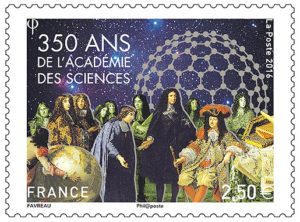
As France commemorates the year of the 350th anniversary of the creation of the Academy of Science it’s time to get your nerd on.
Before setting out, consider a little revision of 5th-grade math and science.
When the concierge tells you that the restaurant is 100 meters from your hotel he means that it’s just 109 yards away. When he tells you that it’ll be 24 degrees Celsius tomorrow that’s t-shirt temperature (75 degrees Fahrenheit). When your fellow jogger in the Luxembourg Garden tells you that a run around the inner perimeter covers 1.6 kilometers you can pace yourself for a cool mile. Before buying a kilo of cheese or chocolate you should know at 2.2 pounds that’s a bit much for one sitting. But 25 centiliters (just over 8 ounces) of draft beer is good enough start for an aperitif, a 350 gram (about 12 ounces) entrecote makes for a hearty meal, and 4 centiliters of calvados brandy makes for a fine nightcap.
A run around the Botanical Garden (Jardin des Plantes) is 1-1.5km depending on the paths you take, but better to take it slow in this 400-year-old institution. That way you take the time to discover its gardens, its zoo and its pavilions dedicated to the sciences associated with plants, animals, minerals and evolution.
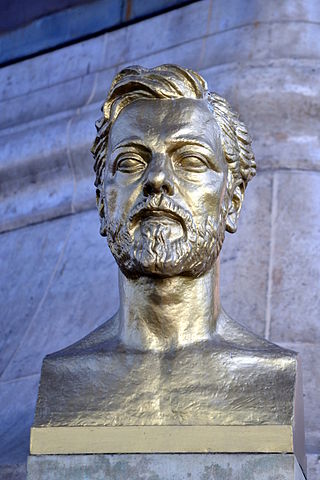
The nerdy traveler doesn’t merely see the world-famous sights of Paris, he or she tries to understand what makes them worthy of admiration.
Just as the Mona Lisa, for all her iconic and celebrity status, is first and foremost a major work of art, the Eiffel Tower, before being one of the world’s most recognizable monuments, represents a feat of engineering. Its builder, Gustave Eiffel, wasn’t only interested in understanding structural stability but in all of the scientific advances of his day, especially aerodynamics.
No need to be a math genius to appreciate a few facts and figures about the tower’s construction. If you’d like a little homework before visiting the Iron Lady—or a post-visit cheat sheet—have a look at “All you need to know about the Eiffel Tower” in pdf on the bottom of this page from the official Eiffel Tower website.
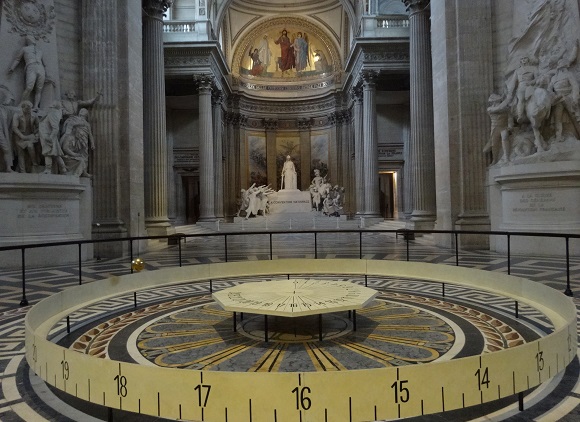
Got a taste for astronomical matters? At the center of the magnificent structure that is the Pantheon, you’ll find an example of Foucault’s pendulum demonstrating the rotation of the earth. Not just any example, but an example at the actual location where, in 1851, the general public first saw how the pendulum provided visual evidence of Earth’s rotation.
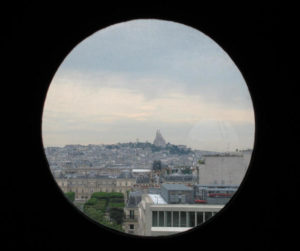
Foucault first presented his demonstration to men of science at the Paris Observatory. That’s the white dome that one sees when looking south from the center of the Luxembourg Garden. The observatory was founded in 1667, as astronomers were working on defining the Paris Meridian, the line that held sway as zero degrees of longitude. We don’t often see stars in the Paris night sky, but during the daytime the astronomical hunter can look to the ground for markers known as Arago medallions that trace the north-south line of the Paris Meridian. In 1911 Greenwich, England took over the international honor of being on the zero line, pushing Paris east.
Still, Earth’s rotation continued as before. If in Paris on March 20, date of the spring equinox in the Northern Hemisphere, you can watch a spot of sunlight hit a marker by the altar of Saint Sulpice Church, as described here.
Those are just a few examples of opportunities for a scientific approach to visiting the sights of Paris.
Meanwhile, there are a number of fascinating, even unique museums dedicated to scientific study and experimentation.
Those with a penchant for medical developments through the centuries should read this article about Paris’s medical heritage sites and museums.
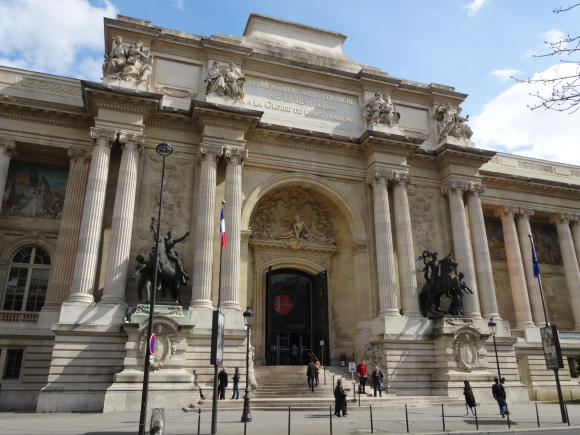
Universience
Head to the Cité des Sciences et de l’Industrie at the northeast edge of the city if in the mood for a modern science museum.
I’m a bigger fan, though, of the old-fashion science museum called the Palais de la Découverte, the Discovery Palace, founded in 1937.
I like it for both its presentation—it still has something of a 1930s Frankenstein movie about it, both in the exhibitions and in the grandiose setting of the “palace”—and for its location—right off the Champs-Elysées, adjacent to the Grand Palais (the Great Palace). Consider it a must-see for nerdy children, ages 9 to 99, who wonder about the makings and workings of the physical world.
Together the City of the Sciences and the Discovery Palace form Universcience, a public structure “promoting the culture of science.”
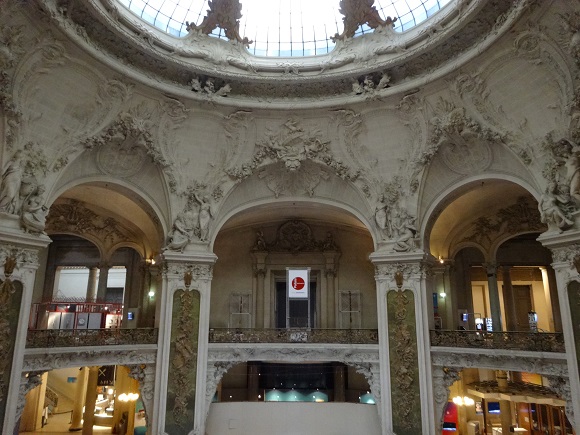
You’d have to be altogether anti-science to not find something to spark your interest and imagination among the exhibits and demonstrations at the Discovery Palace. Permanent exhibitions examine animal communications (rat or octopus demonstrations), optics, the human lottery, hair-raising experiments in electrostatics, sounds and vibrations, aromas and fragrances, mechanics, chemistry, mathematics, pi, the solar system and more. There’s a snack bar/café inside as well. Scientific conferences are given according to a schedule of which can be found here. The Discovery Palace is closed on Monday, as is the museum below.
The National Museum of Technical Innovation
Another outstanding and central museum is the Musée des Arts et Métiers, the National Museum of Technical Innovation, by the metro station Arts et Métiers on the edge of the Marais.
If you aren’t immediately attracted to the theme of technical innovation, you should at least be aware that this brainy museum is among the best of its kind. That’s why it’s been called the Louvre of Technology or the Pantheon of Technical Innovation. I’m no industrial tech-head either, but the objects themselves are as beautiful now as they were innovative when designed.
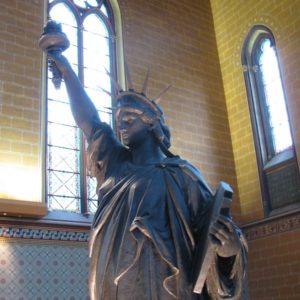
In 1794, the revolutionary priest Abbé Grégoire presented to the Convention (the body ruling revolutionary France) the idea of creating “a conservatory for arts and trades [arts et métiers] where all of the tools and machines that are newly invented and perfected shall be brought together.” The former Abbey of St-Martin-des-Champs was consecrated to that plan in 1798.
The visitor is greeted outside by a bronze copy of the Statue of Liberty. The circuit inside then begins with a presentation of scientific instruments. From there, the museum is organized in seven sections: materials, construction, communication, energy, mechanics (including choice figures of the museum’s automaton collection) and transportation. There are enough descriptive notices in English to keep you informed without going over the head of the layman. Touch screens provide visuals of the inner workings of the certain machines and technologies.
The circuit ends with the holy of holies, the former abbey church, presented as a veritable church of scientific progress. Another example of Foucault’s pendulum hangs from the ceiling in the 12th-century chapel. In the nave, an early flying machine hangs overhead like an angel, while at the far end the original plaster model of the Statue of Liberty stands like Mary herself, bearing not Child but Flame.
Sacrilege? No, science.
© Gary Lee Kraut
Travel in the spirit of France Revisited with nerd tours and more. See here for more.

